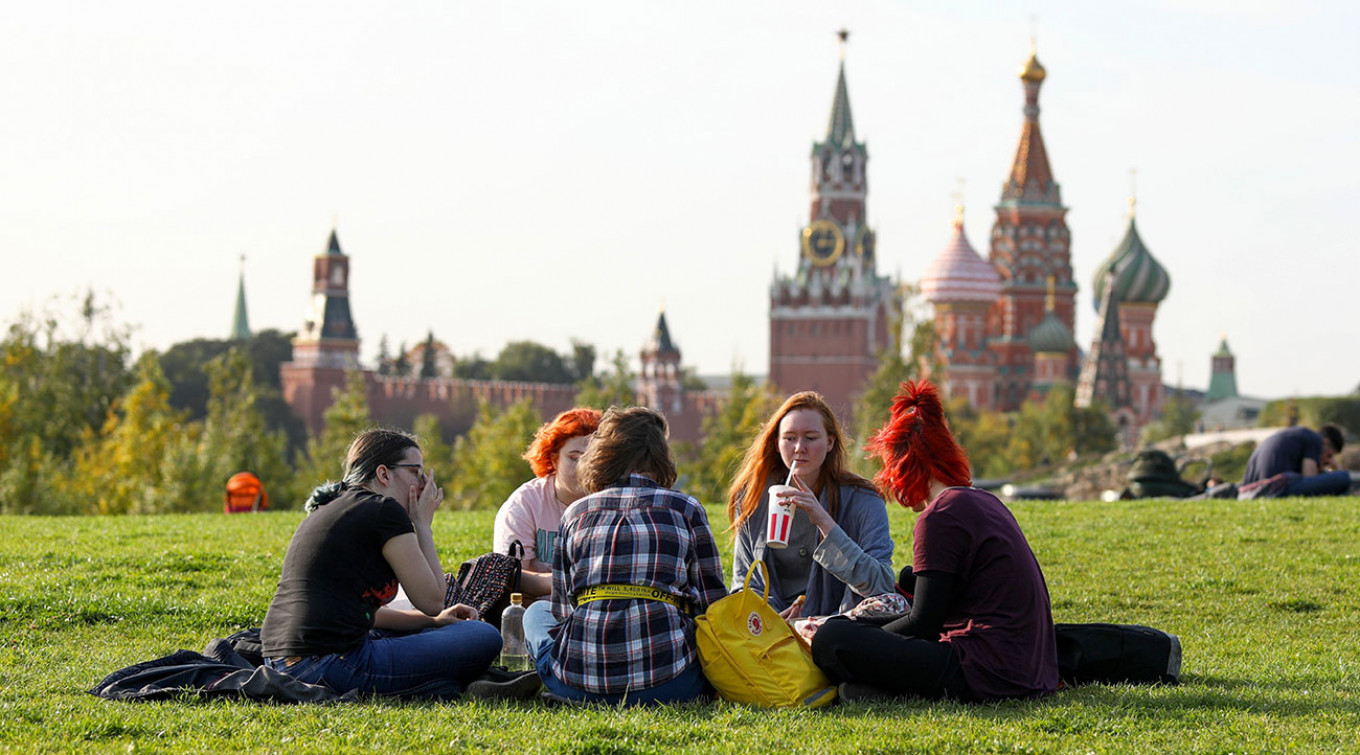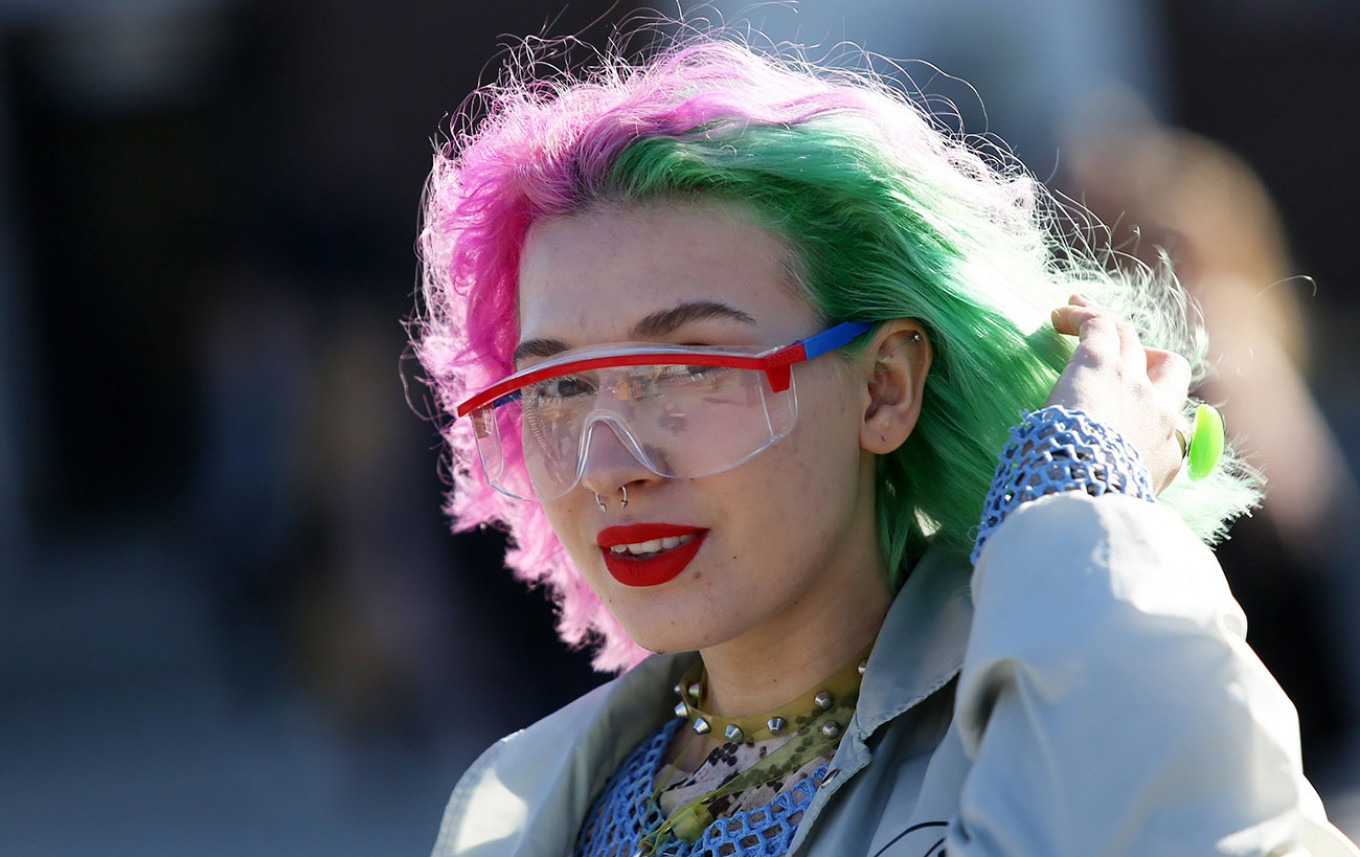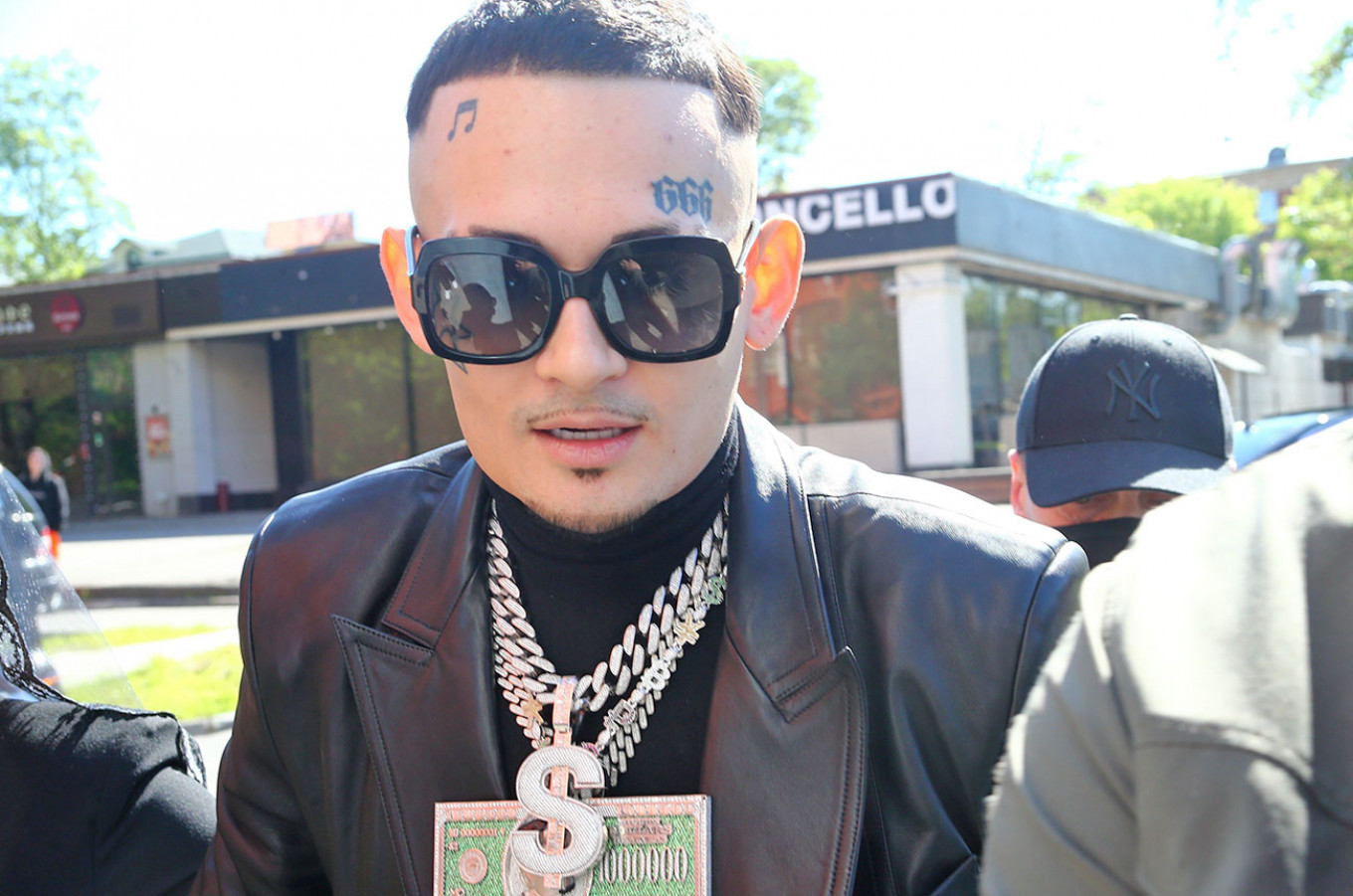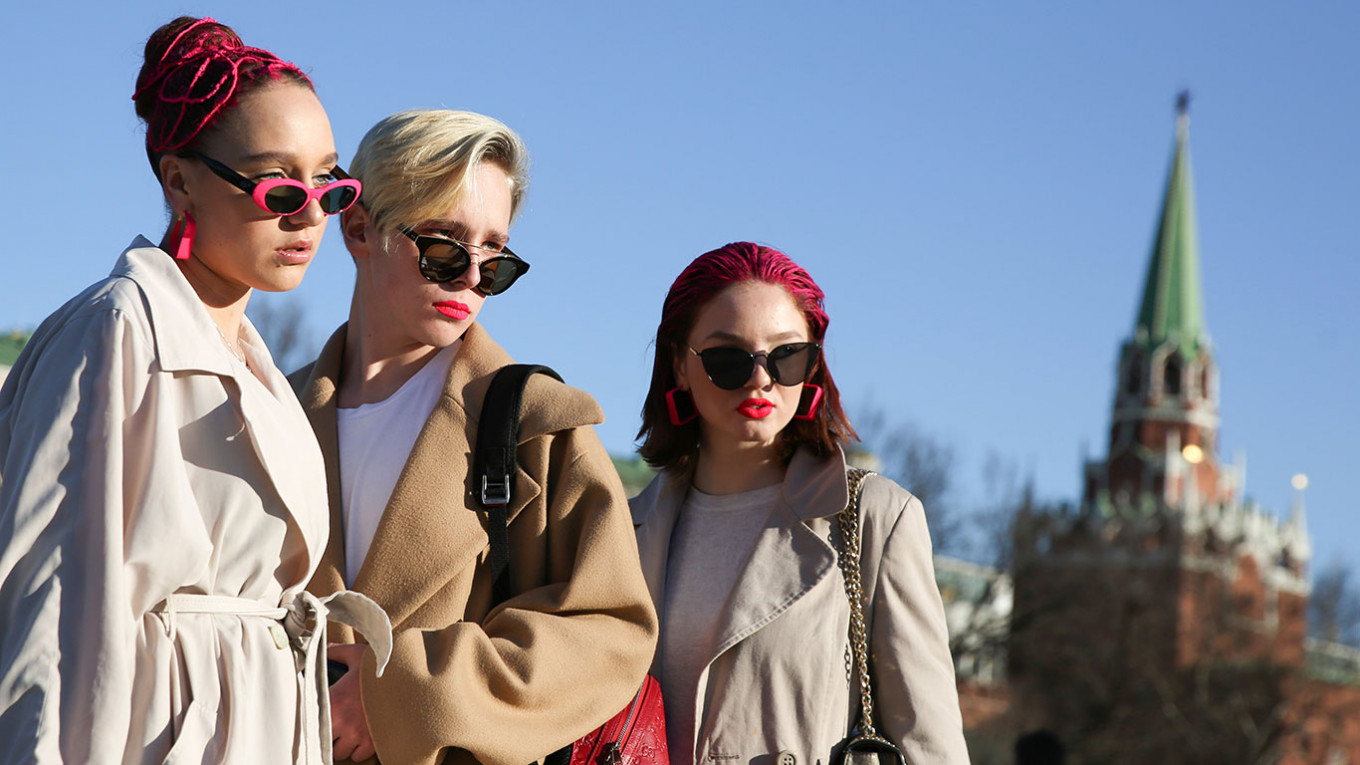At the trendy Khlebozavod and Flacon design factories — former industrial spaces turned into shops, galleries and cafes — it seems like everyone’s hair is rainbow-colored. Young men and women have hair that ranges in color tone from pale to neon: mint, lilac, blue, purple, various shades of pink. Some have all their hair dyed, others have just a few colored strands.
In the last five years, the demand for unnatural hair colors has grown exponentially, says Angelica, a top stylist at a Moscow salon. And if in the past artists or other “creatives” wanted bright blue hair, now it’s doctors, accountants, and librarians. What if they work in a government office? Neon green might be out, but for summer, dyeing the tips something close to natural — eggplant for brunettes or pale pink for blondes — is just fine.
Angelica says that more men than women are doing it, which surprised me until I remembered a photographer friend who seems to have tried all the colors of the rainbow. Another trend is couples with coordinated dyed hair, although at Khlebozavod, the man’s hair color was sometimes bolder than his woman friend’s.
Why is this so widespread? First, the dyes are better and don’t damage the hair. And second, public opinion has become much more tolerant of colored hair. It’s no longer seen as a sign of a marginal subculture, but just a bit of current fashion.
If the first reason is easy to understand, the second requires some explanation.

From Samson to a Soviet Delilah
Historically, hair has never been perceived simply as a part of the body. People have always endowed hair with a special meaning. Think of Samson's hair, which Delilah cut off. Or remember what happened to European women who had relationships with invading soldiers in the wars — their heads were shaved.
In totalitarian and authoritarian states like the Soviet Union, personal appearance, like lifestyle in general, was not a private choice. It was dictated by certain rules, officially or otherwise, which even extended to which hair styles were deemed appropriate for “decent people.”
Of course, in almost any country hairstyles in the 1950s were more conservative than current ones. But in Soviet ideology, bold hairstyles were not symbols of fashion or creativity, but marginality. In Soviet and post-Soviet space, atypical hair became a sign of protest.
This stereotype has not disappeared completely. Even now in Russia there is discrimination against employees because of their appearance. Many companies do not want to hire people with tattoos, piercings, excess weight, dreadlocks or extreme hair color, even though the labor code stipulates that people cannot be denied the right to get a job because of their appearance.
One of the scandals of the summer was over a student in Yekaterinburg, Roman Shcherbakov, who was given a lower grade due to his hair color (aquamarine). Only after the story went public was he given a grade that reflected his level of knowledge, not his style choices.

Style revolution
Today, however, people with brightly colored hair said they didn’t know or didn’t consider their hair a sign of protest.
A young couple in the arts, Julia and Maksim said they dye their hair — he has lime, she has pale pink ends — simply because it is “cool.”
Anna, a wine and food journalist, 44 years old, has been dyeing her hair since she was 17. She tried every color and eventually settled on variations of red. She says that her choice is not connected with inner freedom. “I express freedom in a different way.” Anna loves bright colors, but she doesn't have much time to spend on looks, so bright hair and nails are her best option. If you do it at home, it takes an hour; if you do it in the salon, it takes three hours, but you can read while it’s being done. Nail polish takes 10 minutes anywhere.
Colorful hair as a substitute for makeup or a huge wardrobe — not such a bad idea.

Maybe it’s going mainstream. This spring Alfa-Bank, the largest private bank in Russia, hired the rapper Morgenstern as part of a publicity strategy. Although his hair is naturally dark, he has a very edgy haircut and his face is tattooed. If a serious bank is ready for employees who look like Morgenstern, maybe other companies — and society as a whole — will soon stop discriminating against people with colored hair.
Stranger things have happened in Russia.
A Message from The Moscow Times:
Dear readers,
We are facing unprecedented challenges. Russia's Prosecutor General's Office has designated The Moscow Times as an "undesirable" organization, criminalizing our work and putting our staff at risk of prosecution. This follows our earlier unjust labeling as a "foreign agent."
These actions are direct attempts to silence independent journalism in Russia. The authorities claim our work "discredits the decisions of the Russian leadership." We see things differently: we strive to provide accurate, unbiased reporting on Russia.
We, the journalists of The Moscow Times, refuse to be silenced. But to continue our work, we need your help.
Your support, no matter how small, makes a world of difference. If you can, please support us monthly starting from just $2. It's quick to set up, and every contribution makes a significant impact.
By supporting The Moscow Times, you're defending open, independent journalism in the face of repression. Thank you for standing with us.
Remind me later.







